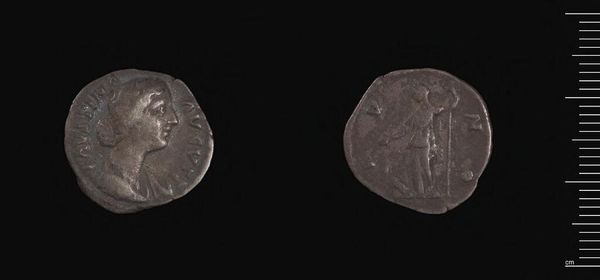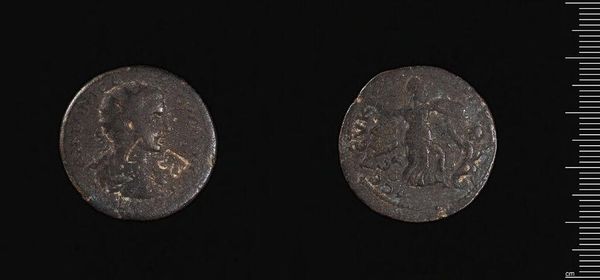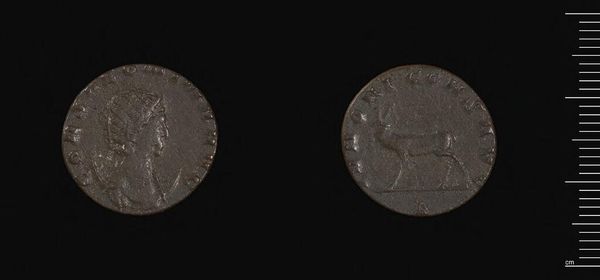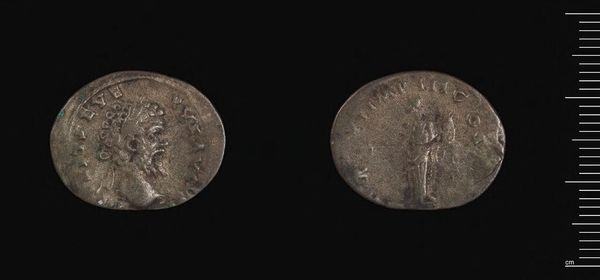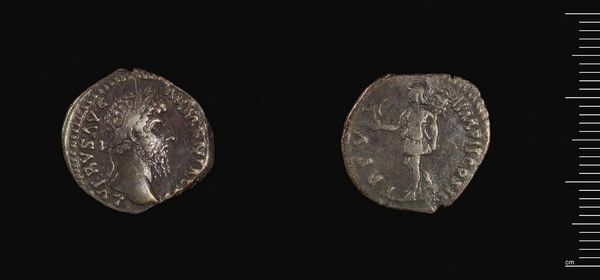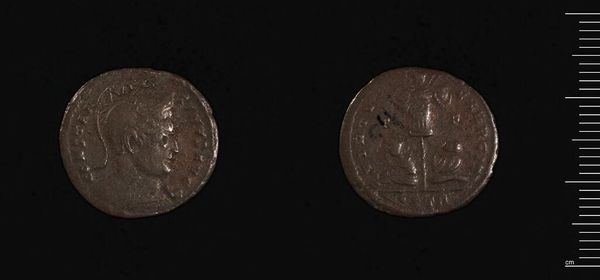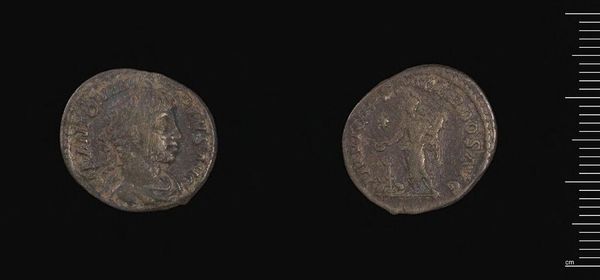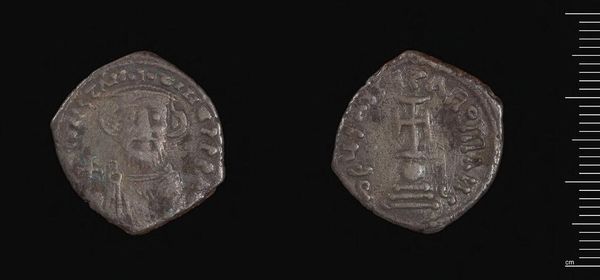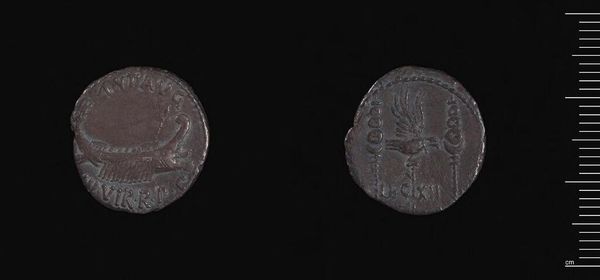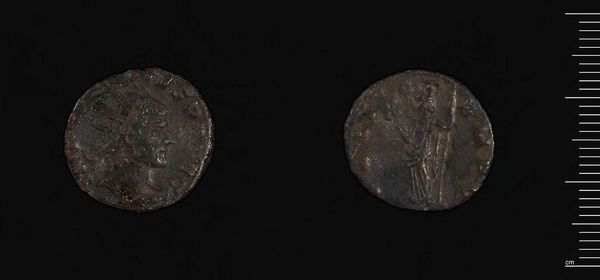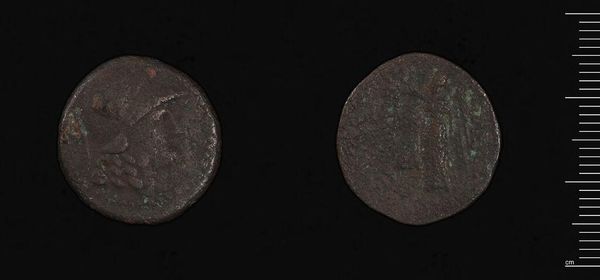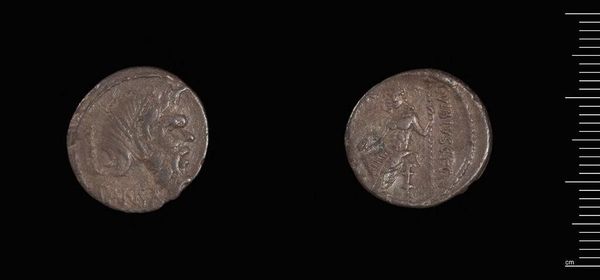
Dimensions: 1.73 g
Copyright: CC0 1.0
Curator: This is an Antoninianus of Gallienus, currently held in the Harvard Art Museums, a small coin that carries great weight. Editor: My first impression is one of wear. You can see the damage time has wrought on the silvered bronze. It speaks of circulation, of countless transactions. Curator: The figure on one side is likely Gallienus himself, and on the other, a symbolic representation of abundance or a deity associated with prosperity, common imagery for coins meant to bolster confidence in the economy. Editor: It's fascinating to think about the labor involved in producing these coins, the mining of the metal, the crafting of the dies, and then the striking of each individual piece. The materiality of the coin links it to the economy and social structures of the Roman Empire. Curator: And beyond that, the coin functioned as propaganda, a miniature portrait of power constantly circulating, shaping perceptions and perhaps even influencing beliefs about Gallienus's reign. Editor: Absolutely, it makes me consider how much power is embedded in even the smallest, most commonplace objects. Curator: Indeed. These coins open up a portal to understanding the Roman world and its visual language. Editor: It highlights the value of looking at the physical object as a product of distinct labor and social conditions, embedded with symbolic value.
Comments
No comments
Be the first to comment and join the conversation on the ultimate creative platform.
